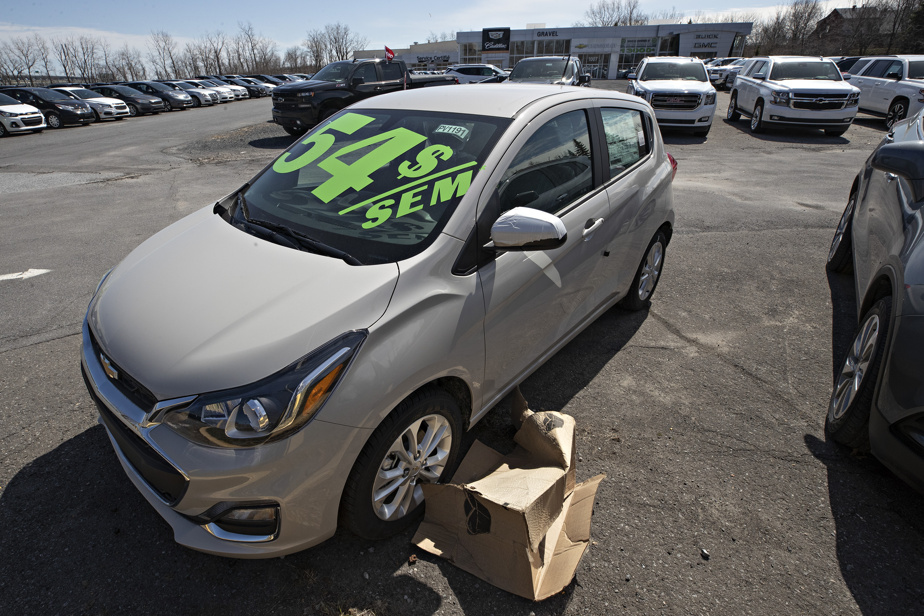A car is generally not that easy to finance strategically, especially when you are retired and interest rates are high like they are right now. Fortunately, when you have a little savings, you can get there without too much difficulty. But you still have to pick the right place.
Lisette*, 64, is retired and receives $33,600 net per year from her pension plan and government pensions. She has a car from 2010 that still works well and she wants to keep it a little longer. On the other hand, she is already starting to plan the purchase of the new one. While her children advise her to rent a rental, Lisette has $30,000 in her registered retirement savings plan (RRSP) and she plans to take out this sum, which will be taxable, to buy a Toyota Corolla. She therefore plans to have $18,000 net for her car and while she saves around $2000 per year in safe investments, she plans to take these future annual amounts for her car. Since her rent costs $800 a month, she has enough money left over to take one trip a year and to spoil her grandchildren. She also has a $30,000 cushion. “I don’t want to touch it, it will be what my children will have when I die,” she says. Other than that, I have no assets, but no debts either. I don’t have much, but given that I was a single mother for a good part of my life without much help from my father, I think I did well. »
Lisette, 64 years old
Annual net indexed retirement income: $33,600
FAMILY: $30,000
Savings: $30,000
Cost of monthly rent: $800
While Lisette’s car still works well, Léa Saadé, financial planner and regional vice-president, wealth management, at Professionals’ Financial, emphasizes that it is a very good thing to start thinking now rather than waiting until later. being in an emergency and having to make a hasty decision.
“I also want to congratulate her for having raised her children alone and not having gone into debt and even being able to save money for them, while being able to spoil her grandchildren and afford one trip per year so that she has the health and energy to do it, she says. This is to his credit. »
The financial planner also points out that to decide whether it is better to buy or lease a car, you have to look at several factors. “If we are talking about a person who has a business and who can deduct their rental costs from their income, this can be interesting,” she explains. But this is not the case for Lisette. Then you have to look at interest rates. Right now they are very high: around 5-7% to rent, whereas before they were 0%. You also have to look at whether the person wants to keep the car for a long time, which seems to be the case for Lisette. It would therefore be in her interest to buy. »
In the eyes of Léa Saadé, emptying the RRSP is not the right option for Lisette, who wants to buy a car. “An RRSP is good for having money for retirement, for a return to school, or for a down payment to buy a property, but not for buying a car, because you will have to pay too much in taxes, especially since she risks coming out with everything at once,” she explains.
The other important thing to look at is the $30,000 cushion. “I hope it is already invested in a tax-free savings account (TFSA) so that the returns are made tax-free,” says the financial planner. If this is not the case, I advise Lisette to immediately transfer this amount to a TFSA which would be, for example, a high-interest savings account so that she can make withdrawals from it at any time. . »
It is from this account that the financial planner advises Lisette to dip into to buy her car.
However, Lisette made it clear that she did not want to touch this cushion to pass it on to her children. “Yes, but she has the same amount in her RRSP that she can leave to them,” she explains. And this sum can continue to grow for several more years. »
In addition, she will be able to spread out withdrawals from her RRSP, or from her registered retirement income fund (RRIF) over time when it is converted, in order to reduce her tax bill.
Léa Saadé also advises Lisette to check the exchange value of her car which still runs well. “Sometimes you can be surprised,” she says.
The financial planner also recommends that Lisette look at a few elements for her estate. “She must ensure, for example, that in her will and in her life insurance, if she has one, the beneficiaries are her children,” she says. There are many people who have already been in a relationship who forget to change their inheritance when they separate, and it is the ex who reaps everything upon death. »
Also, Léa Saadé brings Lisette’s attention to her rent. “She’s lucky, she doesn’t pay too much,” she says. But she must still keep in mind that it is always possible that she will be forced to move, for different reasons, such as eviction. Probably then the price of his new rent would be higher. She must therefore be aware of this risk and think about what she would do in this case. »
This is another good reason for Lisette to continue to grow her assets and to limit her tax bill as much as possible each year. “She places her savings in safe investments and that’s correct,” says Léa Saadé, “but she must still make sure to get the best possible return. This way, she will be better equipped to deal with the different situations that may arise. »
